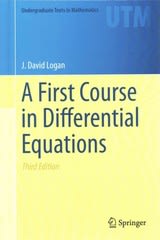Question
Identify the flaw in reasoning in the following scenarios. a) Students at an elementary school are given a questionnaire that they are required to return
Identify the flaw in reasoning in the following scenarios.
a) Students at an elementary school are given a questionnaire that they are required to return after their parents have completed it. One of the questions asked is, "Do you find that your work schedule makes it difficult for you to spend time with your kids after school?" Of the parents who replied, 85% said "no". Based on these results, the school officials conclude that a great majority of the parents have no difficulty spending time with their kids after school.
b) A survey is conducted on a simple random sample of 1,000 women who recently gave birth, asking them about whether or not they smoked during pregnancy. A follow-up survey asking if the children have respiratory problems is conducted 3 years later, however, only 567 of these women are reached at the same address. The researcher reports that these 567 women are representative of all mothers.
c) An orthopedist administers a questionnaire to 30 of his patients who do not have any joint problems and finds that 20 of them regularly go running. He concludes that running decreases the risk of joint problems.
a) What is the flaw in the reasoning?
A.The parents that did not respond are probably the ones that have trouble spending time with their children after school.
B.Students could have forgotten to give their parents the survey.
C.85%
%isn't really considered a 'great majority'.
D.Students could have answered the survey themselves, instead of giving it to their parents.
b) What is the flaw in the reasoning?
A.The missing responders are likely renters (as opposed to homeowners), which could suggest that they are of lower socio-economic status. Someone from a lower socio-economic status might be more likely to smoke during pregnancy.
B.1000 women was too small of a sample size to begin with, so the survey cannot be conclusive one way or the other.
C.3 years is too short of a time period.
D.3 years is too long of a time period.
c) What is the flaw in the reasoning?
A.This is an observational study, so the doctor shouldn't be making causal conclusions.
B.People that go running tend to be healthier in general, and are thus less likely to have joint problems.
C.All of the answers are correct.
D.There is no control group in the study.
Step by Step Solution
There are 3 Steps involved in it
Step: 1

Get Instant Access to Expert-Tailored Solutions
See step-by-step solutions with expert insights and AI powered tools for academic success
Step: 2

Step: 3

Ace Your Homework with AI
Get the answers you need in no time with our AI-driven, step-by-step assistance
Get Started


